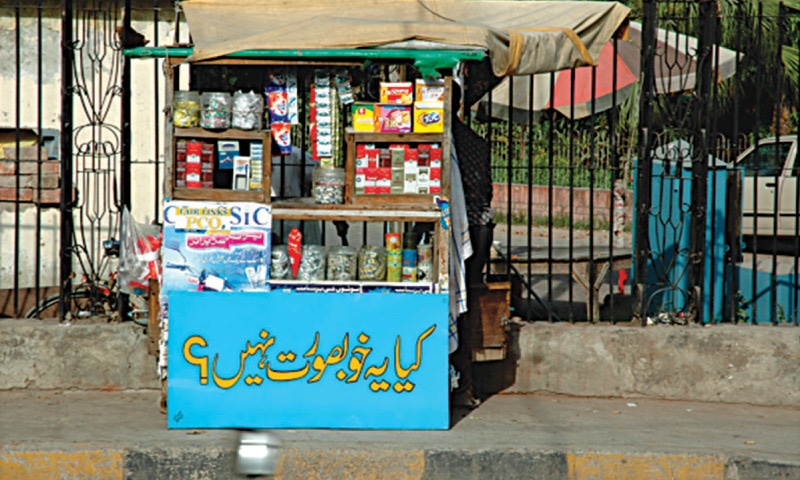It is not common to hear the words ‘ugly’ or ‘beautiful’ bandied about when discussing or looking at a work of art. Can such simple words capture our experience of art when we look at the complexity of our world today? Or are they redundant?
The standards for classifying artworks as ugly or beautiful can be relative; after all, ugly works of art are also evocative, for they too reveal certain truths about the world we live in.
Polykleitos, a Greek sculptor, wrote the Kanon, a treatise that proposed that a certain balance in proportions determines a beautiful body. Both Greek and Roman sculptors imbued their figurative sculptures with life; apart from their gods they sculpted the beauty they saW in the figures of peasants, fisherman and even aging courtesans. In a Roman copy of a sculpture from the Greek Hellenistic period, made in the second century BC, titled, ‘Marble Statue of an Old Woman’ for instance, we see an old woman bent with age; her gaunt appearance, sagging body or the clothes that drape her have been sculpted with a loving sensitivity. This statue carries a life lesson: the whole world is not necessarily ‘beautiful’ – beauty is transient and can be found in various modes of expression.
Countless depictions of Christ as a martyr, crucified or suffering, have remained the mainstay of Christian art. One may balk at the graphic violence and even characterise it as ugly, unpleasant or unseemly but these dramatic works are meant to move the viewer and invoke empathy for his suffering. Prior to the Renaissance and Middle Ages, Christ was depicted with great pomp and ceremony, garbed in robes and silks, as a towering and regal figure, proving that with time a new facet of a divine being also reveals a new facet of society. After all, the Middle Ages and even the Renaissance were a time of great political uncertainty and tumult in Europe and this predilection for violence manifested itself in religious art, along with the use of grotesque monsters and otherworldy beings from hell.
One can argue that there is great beauty in both the Renaissance artist Leonardo da Vinci’s consummate skill and the 18th-century caricaturist William Hogarth’s works. Da Vinci celebrated the beauty he saw in all unique human forms when he sketched people with unusual physiognomies on the streets of Florence, while Hogarth attempted to unveil social inequity on the streets of London by exaggerating and distorting features of those who were responsible for it. Both artists’ motives offer truths about the world we live in and recognise the role of the spectator/viewer’s reaction.
Does art go beyond the classification of ‘ugly’ or ‘beautiful’?
Byproducts of a capitalist society, contemporary artists such as Andy Warhol, Jeff Koons and even Damien Hirst have negated emotion and context in their works in order to highlight the desensitisation and lack of empathy that characterises our existence. Such flagrant irony doesn’t always work; American artist Koons was criticised in 2019 when his sculpture ‘Bouquet of Tulips’, meant to commemorate the terror attacks that took place across Paris, was criticised by the French. The 41-foot sculpture showed a hand clutching a colourful bouquet of tulips, but instead Koons was accused of obscenity and of displaying a “disembodied hand”.
Navigating between the complex history of aesthetics in the East and West, that has congealed with the effects of globalisation and capitalism, is no mean feat for contemporary Pakistani artists either. Perhaps a reassessment of our own realities and quotidian existence is in order.
That might have been Pakistani artist Ayesha Jatoi’s intention behind her series of installations produced in the earlier half of her career during her Vasl Residency in Karachi. Jatoi simply posts a signboard over various sites and are often overlooked in the city that are on the fringes. A mechanic’s toolshed next to a public wall, a barbershop on the roadside, a decrepit shop on the roadside selling paan and cigarettes are all adorned by a painted signboard in Urdu and English with the text “Isn’t this beautiful?”, “Kya yeh khoobsurat nahin?”
This is not a plea. Jatoi is asking us to reflect on and appreciate the value, beauty and importance of everyday existence, however humble it may be. Instead of paintings of beautiful landscapes, portraits of kings and queens who were born in privilege, Jatoi pays homage to and draws attention to the contributions of ordinary citizens and their determination to survive. Her question is of great relevance today: is there no nobility, value and beauty in such adversity?
Published in Dawn, EOS, April 19th, 2020















































Dear visitor, the comments section is undergoing an overhaul and will return soon.